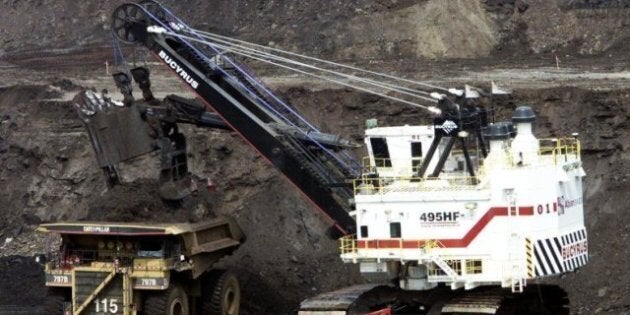
Just about a year ago, politicians and the general public in the United States were making critical remarks about "Canada's dirty oil."
David Schindler, the respected environmental scientist at the University of Alberta published a paper with his colleague Erin Kelley showing that government sponsored environmental monitoring data were inadequate, and James Cameron the Canadian film director (Titanic, Avatar), visited the oil sands to show his concern, and was received respectfully by the Alberta Government. There was widespread alarm at these perceived threats to Canada's reputation and possibly to its export market.
This heightened attention raised public concern to a new level, and both the federal government and the Alberta government realized that action needed to be taken. Several major initiatives were started last Fall, and these are now reaching completion, with whole new sets of analyses and recommendations emerging from government-appointed study groups.
A federal Oil Sands Advisory Panel was formed in October, and reported to the then interim Environment Minister John Baird in December. Baird admitted that governments needed to "up their game" with respect to environmental management of the oil sands. He initiated an intensive examination of air and water quality environmental science by his officials at Environment Canada.
The Alberta government appointed a task force in October to examine Schindler's data and to explore the reasons why his results were so different from those resulting from the work of the Regional Aquatic Monitoring Program (RAMP) -- the government-sponsored, industry-funded organization charged with the responsibility for water quality studies since 1997.
The final report of this group of scientists, submitted in March 2011, described the inadequate standards of water sampling and analysis used by RAMP. For example, they had not realized, as had Schindler, that one of the worst sources of air-borne pollution in the surface waters is the winter snowpack. Pollutants from industrial emissions accumulate there all winter long, and are released into the river system rapidly during the spring thaw, at the time when fish are spawning.
With all this as background, the Alberta Environmental Monitoring Panel, appointed by Alberta Environment Minister Rob Renner in January 2011, had much to do to come to grips with the magnitude of the environmental problems and to propose solutions.
Visits were made to Fort McMurray, to the oil sands industrial sites, and to the First Nations communities at Fort MacKay and Fort Chipewyan. Public hearings were held and much advice received. The conclusion to all of this is that only an independent, science-based monitoring authority, at arms-length from government and industry, could establish the necessary credibility in gathering data, carrying out analyses and making recommendations regarding local and long-term environmental effects. A formal process termed MER: monitoring, evaluation and reporting, needs to be initiated in the oil sands area, and the panel recommended a new Environmental Monitoring Commission to carry out this work. The final report containing these recommendations was released by the Minister on July 5.
Meanwhile scientists from Environment Canada have been working with their counterparts in Alberta, Saskatchewan and the Northwest Territories to develop a fully-fledged science plan to do this work. The completed plan is expected to be announced very shortly.
The final piece of the puzzle is to figure out how the federal government and the Alberta government can bring their ideas, their scientists, and their responsibilities together, to make this project work efficiently.
While Alberta owns the resource, and has the responsibility for managing oil sands developments, the federal government has intersecting responsibilities to manage trans-boundary pollution, to ensure the health of First Nations Communities, and to act as environmental stewards for federal lands, such as Wood Buffalo National Park, and the health of fisheries everywhere. This is a jurisdictional challenge.
However, both Alberta Minister Renner and Minster of the Environment Peter Kent are on record as promising action in this area, and the public could help enormously by keeping this issue alive in the political arena. Money should certainly not be the problem. Industry is already spending tens of millions of dollars on environmental monitoring and has indicated that they would be happy to see these funds spent more effectively. Such funds are a drop in the bucket compared to the level of investment in oil sands development, which could reach $10 billion a year over the next decade.
Andrew Miall served as a member of both the Federal Oil Sands Advisory Panel and the Alberta Environmental Monitoring Panel.